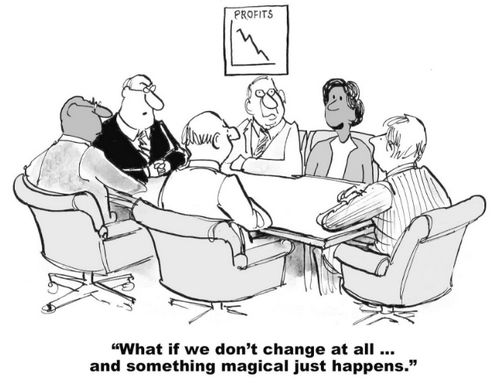Becoming a project manager requires you to face the reality that not all of your projects will be successful. Failures can happen, but knowing how to deal with failure is another characteristic of a professional project manager. It’s good to know how to recover quickly, and salvage what you can from a bad situation.
Plus, it’s important to learn from your mistakes and use that knowledge to better plan your next project. There are also several key elements identified as causes of project failure. So here are six reasons why your project plan may never work out.
Creep Scope
Scope creep is basically everything your project will include, but also everything your project will not load. It is very important that the scope of your project is well defined, and that it is segmented into meaningful tasks and milestones.
To ensure success, you need to keep the project scope from minor changes, and to make sure everyone involved in the project agrees with your decision, before you start. Changing the scope will create problems with deadlines and budgets, and with each small change, problems on the project are likely to increase. In short, stay within the boundaries of the project scope.
Poor Stakeholder Management

Stakeholders are people who have a stake in your project, and a good project manager must identify all stakeholders. They need to be informed about the progress of the project, and they may also be asked to agree on some of its elements, so they need to be involved before the project starts.
Fortunately, not all stakeholders have the same level of importance, or interest in your project, so each stakeholder does not need to be updated frequently. Also, some stakeholders can give you valuable input and they can be very helpful if they engage and engage in the right way.
Lack of Organization
Organizational and project reviews are much more difficult on larger projects, especially if some of the tasks are outsourced to other companies. Fortunately, by using simple project management software, you can ensure that everyone is informed of their responsibilities and that everyone is kept up to date with the progress of the project. Good organization requires distribution of tasks, documented instructions and a platform for constant communication.
You must find a project management tool which allows you to do these things and offers secure storage for documents. It’s important that you invest in easy-to-use project management software that all your team members can quickly get used to, with no prior training on how to operate it.
Lack of communication

Understanding responsibilities, instructions and expectations is another pillar of successful project execution. These things would not be possible without healthy communication. It is very important that everyone understands their role in the project and that managers are informed about possible bottlenecks and weaknesses.
Managing a redundant project is no easy task, and every team has to put a lot of effort into it, and work in unison. A good example of project failure occurred in 2005, when the US government failed to prevent the Hurricane Katrina crisis.
Poor Market Analysis
Even if your project is finished, that still doesn’t mean it’s a success. The ultimate goal is to achieve a high return on investment and actually earn enough profit to justify all your troubles.
Poor market analysis can result in failure, and it will also prevent other projects from being funded, due to a loss of credibility. This happens in the film industry all the time, as studios make movies that audiences don’t really like, or movies that don’t get noticed.
Interacting with the community or core audience should be the main input source that determines what your project will look like. Advertising is another part of market analysis. Make sure you keep track of how people are reacting to news about upcoming products. Are they excited? Are they willing to pay for it? What do they expect from him?
So you need to make sure that you’re creating something your audience wants, that you’re not falsely advertising an upcoming product, and that you’re tracking the reactions of your potential customers. There are many warning signs that will allow you to stop your project before it’s too late.
Alternatively, you can do market analysis by relying on crowdfunding. If people are willing to invest in your project and if you reach the required funding milestones, you can move on with your project.
No Emergency Plan

Finally, your plan needs to have contingency, so you know exactly what to do if something goes wrong. Identify the key players in the project who should be available 24/7 and identify replacements if any of them are unreachable. Find an alternative workspace if the facility you are using is not accessible. It can be useful to find a reliable outsourcing solution that can fit in, if you can’t meet a certain deadline. Fundamentally, it is risk management, and an essential part of any plan.
Well, now that you know the possible reasons for your project plans to fail, you too can take the necessary precautions to avoid them, and to secure the success of your future projects.








